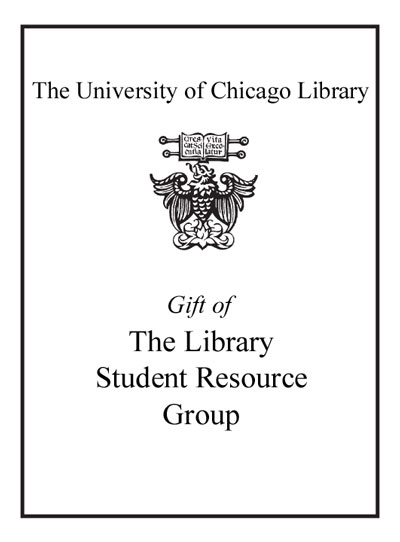Review by Choice Review
If prizes were given for bad titles, this book might be a winner. It tells a familiar story of a gutsy "girl" who finds fame--first as a dancer with the Follies, then with movie roles as well--because she had talent, or something akin to it. She married her most understanding director, Robert Z. Leonard, but Erich Von Stroheim brought her starlit fame with The Merry Widow (1925), even though one bad day on the set she called Stroheim "the dirty Hun" (that insult lives on in a chapter title). She waltzed the "Merry Widow" with John Gilbert. Other on-screen partners included Valentino, Francis X. Bushman, Warner Oland, Conrad Nagel, and Lon Chaney. Though Kevin Brownlow did not interview Mae Murray for The Parade's Gone By (1968)--his gorgeous tribute to silent cinema--he wrote the foreword for the present book. This may prompt serious film buffs to take Ankerich's book seriously, despite infelicities of style, taste, and diction and a plethora of really banal silent film plot summaries. In her day, Murray danced for Ziegfeld, fought with Von Stroheim, and cuddled with Valentino. That could justify a book seasoned with an overload of Sunset Boulevard pathos. Summing Up: Optional. General readers only. J. M. Welsh emeritus, Salisbury University
Copyright American Library Association, used with permission.
Review by Library Journal Review
If one silent-film superstar personifies the iconic Norma Desmond (Gloria Swanson of Sunset Boulevard), it would be Mae Murray. Beautiful, talented, vain, glamorous, famous, and infamous: Murray, with her "bee-stung lips,"Åhad one of the great faces of the silent era. Beginning her career as a dancer on Broadway in the early 1910s, Murray made an easy transition from the Ziegfeld Follies into film and found great success and stardom that lasted throughout the silent era. The arrival of sound film, along with an unfortunate marriage and bad career decisions, led to the inevitable fading of Murray's star-a common Hollywood story. Murray herself, however, was very uncommon. Ankerich (Broken Silence: Conversations with 23 Silent Film Stars) has managed to capture lightning in a bottle, piercing the fog of time and faded memories to create a compelling and haunting biography of one of film's long-forgotten lights. -VERDICT In what will surely become the actress's definitive biography, Ankerich captures a glittering, elusive Murray, who lived in a self-created bubble of everlasting fame and who spun faster and faster until one day "she was gone." Recommended for all fans of silent film and Old Hollywood glamour.-Teri Shiel, Westfield State Univ. Lib., MA (c) Copyright 2013. Library Journals LLC, a wholly owned subsidiary of Media Source, Inc. No redistribution permitted.
(c) Copyright Library Journals LLC, a wholly owned subsidiary of Media Source, Inc. No redistribution permitted.
Review by Kirkus Book Review
An extensively researched look at the life of silent-movie star Mae Murray (18851965). Ankerich (Broken Silence: Conversations with 23 Silent Film Stars, 2011, etc.) structures this biography chronologically, beginning with Murray's birth to poor German immigrants in New York City's Lower East Side. As an adult, Murray offered little to no factual details about her childhood, shrouding "her own birth date and her early years in a veil of secrecy." Early on, she lost her father to alcohol-related complications; before she was 18, she cut off all contact with her mother and her brothers, one of whom showed up years later demanding money and threatening to reveal Murray's sordid family story to the press if she didn't pay up. Passionate about dancing, the teenage Murray lingered around stage doors and got her start in theater, dancing and singing. Ankerich tracks Murray's multiple failed marriages and her lucrative career in Hollywood, including the dramatic back stories of such films as The Merry Widow. Her penchant for hiding the truth about her life revealed itself yet again when she secretly gave birth to a son in 1926. Five months later, despite her love for the man she described as her "soul mate," Rudy Valentino, Murray wed David Mdivani, an aspiring filmmaker who falsely identified himself as a Georgian prince. Shortly thereafter, Valentino died, leaving Murray devastated. Her marriage to Mdivani unraveled with endless fighting and a custody dispute as Murray struggled with financial problems that would plague her for the rest of her life. In 1965, she died of a stroke. Ankerich's studied biography leaves no stone unturned, and he integrates hundreds of quotations and sources, grounding Murray's life with fascinating facts. Will appeal to film buffs and readers interested in the rise and burnout of long-ago Hollywood stars.]] Copyright Kirkus Reviews, used with permission.
Copyright (c) Kirkus Reviews, used with permission.
Review by Choice Review
Review by Library Journal Review
Review by Kirkus Book Review

